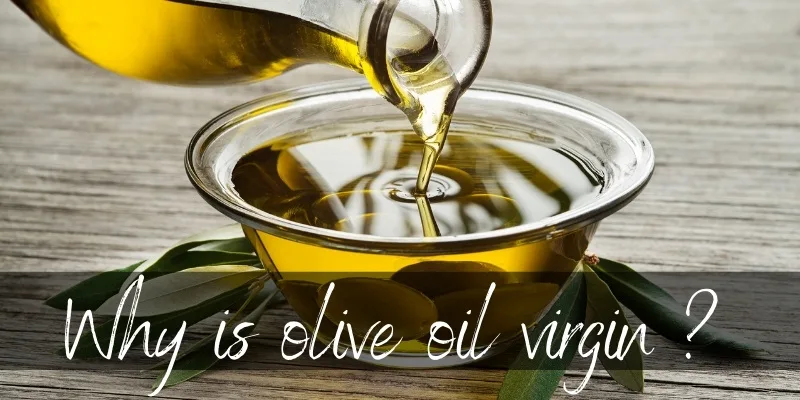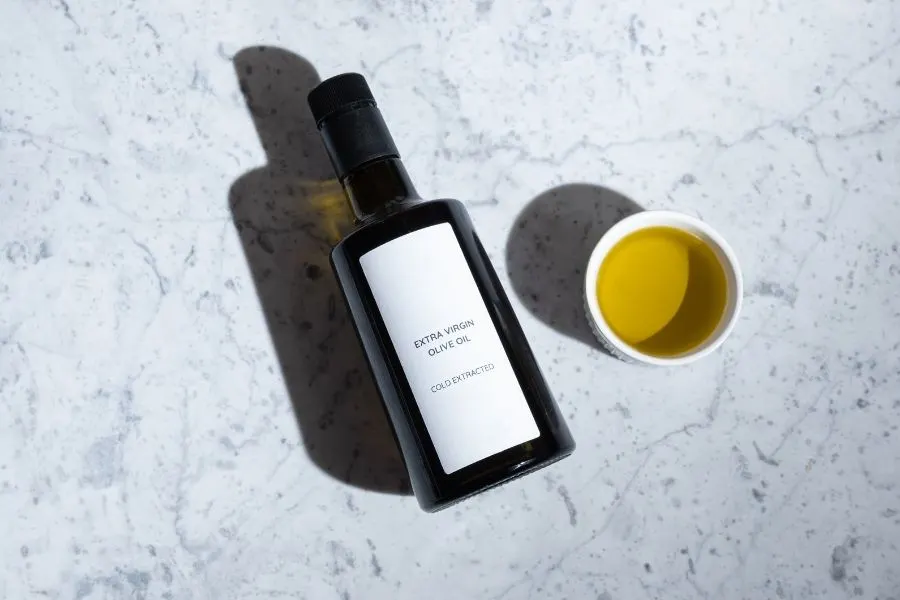It’s been drilled into our heads that olive oil is THE oil to have in your kitchen. And for the most part, it’s very true. Superior taste, beautiful color, and has a host of health benefits when compared to other vegetable oils. So naturally, you go and get yourself a bottle of this delicious, beautiful liquid fat. At which point you look at the shelf of olive oil bottles, upon the dozens of labels, and wonder about the labels.
Why is olive oil virgin ? What does extra virgin mean ? Does the color of the bottle matter ? Why are some of them cloudy ? Why is it sometimes bitter ? All this and more, coming right up. Knowing your olive oil grades is important so you know what to buy and what to use it for.

Why is olive oil virgin ?
Olive oil is considered virgin when it is extracted by mechanical means, without chemical solvents, in a cold press method. Virgin olive oil is thought to be superior in taste and color, but has a low smoke point.
There are different grades of olive oil, starting from extra virgin and ending with pomace oil. Let’s take a look at them.
Extra virgin olive oil has the lowest amount of free acidity (oleic acid), namely under 0.8%. This low acidity is obtained without a refining process, it’s derived from the olive itself. This very low acidity, or rather astringency, is what gives extra virgin olive oil the best taste.
Virgin olive oil is a slightly more acidic oil, with up to 2% oleic acid. This olive oil is also produced through mechanical means, and cold pressed, and is not refined.
Refined olive oil is virgin olive oil that has been refined through chemical solvents, charcoal, and/or physical filters. This makes the total oleic acid presence less than 0.3%. But because of the way it is obtained, this olive oil is ranked lower than extra virgin olive oil.
Olive pomace oil is extracted from the already crushed seeds. When olive oil is first extracted, the seeds are crushed, and any grade may be extracted (extra virgin or virgin). The remaining paste has some leftover oil, which is then extracted a second time through chemical solvents. This is pomace oil. It has a neutral taste and is the lowest grade of olive oil, but still edible.
Why is olive oil bitter ?
Olive oil gets its slightly bitter notes from the presence of different polyphenols but especially oleuropein. Oleuropein is higher in green olives, which is why olive oil made only from green olives will have a bitter aftertaste. Ripe olives have less oleuropein, leading to a milder, sweeter olive oil.
Read also: Why Are Cherries Red ?
How do you know if your olive oil is made with green olives or not ? In general, olive oil with a significant green hue is made from green olives. A golden-hued olive oil is made from perfectly ripe olives, which are purple-black in color and less bitter.
Overly ripe olives produce an oil that is already slightly rancid, because the fats have already begun to oxidize.
You have a higher chance of getting bitter olive oil when you go for extra virgin or virgin olive oil. Refined olive oil has the lease amount of oleuropein, the bitter compound. Olive pomace oil is also not bitter, but it has almost not flavor.
Why is olive oil in a green bottle ?
Olive oil is very heat and light sensitive, so a green or brown bottle will filter out the light very well, preserving the quality of the olive oil. A good olive oil company will not bottle their product in a clear glass bottle.
It’s also your responsibility to store olive oil in a place away from direct sunlight, and away from direct heat. So a pantry, cabinet, or cupboard will do just fine, as long as the room is not continuously hot.

Why is my olive oil cloudy ?
Olive oil can get cloudy if left in cold storage for too long. The esters derived from the polyphenols in olive oil are waxy in nature, and will solidify at very cold temperatures, or if left in the cold for a long time.
So a bottle of olive oil left in the fridge for a week will form cloudy parts where the waxy esters clump together. Conversely, frozen olive oil will thicken considerably and parts of it may be hard.
Is cloudy olive oil bad ?
Cloudy olive oil is perfectly safe and does not need to be discarded. If your olive oil is indeed cloudy, you can return it to its original texture by keeping it at room temperature for a few hours. Freezing or keeping the olive oil at low temperatures does not harm it in any way.
Most olive oil companies usually treat their product to stabilize it for colder climates or cold storage, but not all of them do. If your bottle of olive oil has turned cloudy, keep it on the counter for a few hours and it should return to normal. Don’t warm it in a pot of hot water ! Simply let it ‘melt’ on its own.
In short, olive oil has different grades and you’re less likely to find a true extra virgin olive oil. The label isn’t protected, but most companies follow the general guideline of less than 0.8% free acids. We recommend you go for a golden-hue olive oil, as opposed to a green hued one. Must less chance of bitterness, and a much better flavor.

